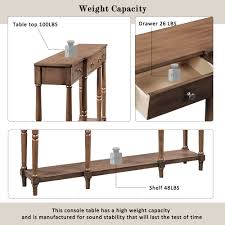Introduction
In the realm of furniture design and manufacturing, ensuring safety and stability are of paramount importance. Whether it’s a dining table in a cozy home or a conference table in a bustling office, stability is a crucial factor in determining the quality and reliability of the furniture. As a competent SEO and senior copywriter, I will delve into the ISO 7172 Standard for Table Stability Testing, its significance, and how adhering to this standard can set your furniture products ahead of the competition.
What is the ISO 7172 Standard?
ISO 7172 is an international standard that provides guidelines for testing the stability of tables. It is an essential part of the ISO 7170 series that covers various aspects of furniture testing and safety. The ISO (International Organization for Standardization) is a global body that develops and publishes international standards to ensure quality, safety, and efficiency across various industries.
The ISO 7172 standard specifically focuses on tables and outlines the procedures and methods for evaluating their stability. By adhering to this standard, furniture manufacturers can create products that meet safety requirements and offer customers a reliable and secure experience.
Importance of Table Stability Testing
Ensuring table stability is crucial for multiple reasons. First and foremost, it safeguards users from potential accidents and injuries caused by furniture collapse. A stable table provides a secure platform for various activities, be it dining, working, or conducting meetings. By conducting thorough stability testing according to ISO 7172, manufacturers can eliminate potential hazards, thus enhancing the trust and satisfaction of their customers.
Moreover, complying with international standards also gives furniture manufacturers a competitive edge. Customers are increasingly becoming aware of the importance of safety and quality standards, and they are more likely to choose products that meet these requirements. By marketing furniture as ISO 7172 compliant, manufacturers can establish themselves as reputable and trustworthy brands, leaving their competitors behind.
Table Stability Testing Parameters
ISO 7172 outlines several parameters and methods for testing table stability. These include:
1. Horizontal Force Test
The horizontal force test evaluates the ability of a table to withstand horizontal forces that may occur during regular use or accidental impacts. Testers apply forces to different points of the table’s edge, measuring its deflection and response to external pressure.
2. Vertical Force Test
This test assesses the ability of a table to support a specified vertical load without failure. The table’s structure and materials are thoroughly examined to ensure they can bear the designated weight without buckling or collapsing.
3. Stability and Overturning Test
The stability and overturning test determine whether a table can maintain stability when subjected to tilting or tipping forces. The table must meet specific criteria to prevent tipping under different conditions, such as when an external force is applied or when the weight distribution is uneven.
4. Durability Test
The durability test evaluates the long-term stability of the table by subjecting it to repeated loading and unloading. This test simulates the wear and tear a table might experience throughout its lifetime, ensuring that it remains stable and safe under regular use.
Advantages of ISO 7172 Compliance
Adhering to the ISO 7172 standard offers various advantages to furniture manufacturers:
1. Enhanced Product Safety
By following the guidelines of ISO 7172, manufacturers can create tables that are safer for consumers, reducing the risk of accidents and potential injuries caused by unstable furniture.
2. Improved Marketability
ISO 7172 compliance can be used as a powerful marketing tool. Manufacturers can highlight their commitment to safety and quality, giving them a competitive advantage in the market and attracting safety-conscious customers.
3. International Acceptance
ISO standards are globally recognized and respected. Compliance with ISO 7172 allows furniture manufacturers to gain acceptance in international markets, expanding their reach and potential customer base.
4. Brand Reputation
Building a reputation for producing stable and safe furniture bolsters a brand’s image and fosters customer loyalty. Satisfied customers are more likely to recommend a brand that prioritizes safety and quality.
Conclusion
In conclusion, the ISO 7172 Standard for Table Stability Testing is a vital tool for furniture manufacturers to ensure the safety and reliability of their products. By subjecting their tables to rigorous testing and adhering to the guidelines of this international standard, manufacturers can create furniture that meets high-quality benchmarks and establishes their brand as a leader in the industry.








